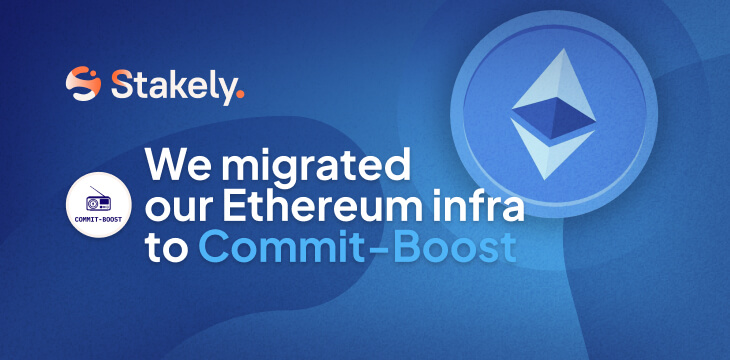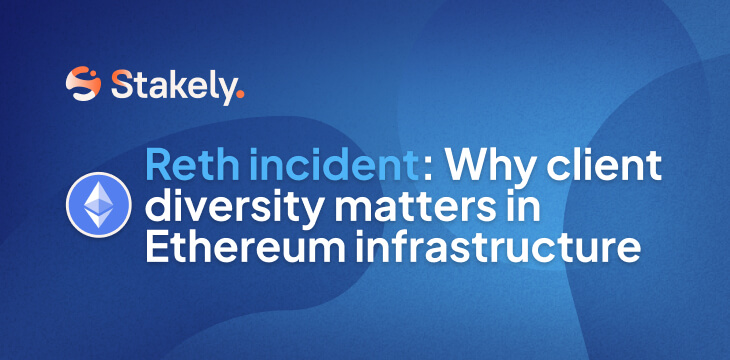We migrated our Ethereum infrastructure from MEV-Boost to Commit-Boost

At Stakely, we’ve completed the migration of our Ethereum infrastructure from MEV-Boost to Commit-Boost. With this change, we’re taking a step forward in improving the daily operations of our Ethereum validators and preparing for features that Ethereum will implement in the future.
What is Commit-Boost?
Commit-Boost is an open-source sidecar for validators, fully compatible with the API defined by MEV-Boost, and conceived as a public good. Simply put, Commit-Boost is an additional piece of software that connects to the validator—like an “extension” that enhances and expands its capabilities for block creation on the blockchain.
Until now, the standard was MEV-Boost, which allows validators to receive already-built blocks from specialized actors called builders. But Commit-Boost takes it a step further by addressing an emerging issue: each new improvement in block building within the protocol (like preconfirmations or inclusion lists) was creating its own implementation, fragmenting the ecosystem and making validator operations even more complex.
Commit-Boost unifies everything into a single tool, acting as a modular sidecar that standardizes communication between validators and commitment protocols, reducing risks and simplifying operations.
Main advantages of Commit-Boost
Commit-Boost brings operational improvements for validators’ day-to-day activities, and its key benefits include:
- Process unification: instead of having different software for each function, only one is needed.
- Full compatibility with MEV-Boost: it works just like before, but with enhancements.
- Monitoring and alerts: enables metrics and dashboards ready for Prometheus/Grafana, with real-time alerts and tracking.
- Seamless changes: thanks to hot-reload, it offers dynamic configuration without needing to interrupt service.
- Independent audit: its code was reviewed by Sigma Prime in 2024.
- Future-ready for Ethereum: designed to support new features like preconfirmations, inclusion lists, or a more decentralized PBS.
- Scalable: easily integrates with new modules that implement future protocol improvements or features.
Why did we migrate at Stakely?
At Stakely, we adopted Commit-Boost for several reasons:
- It offers better operational management of our validators.
- It allows us to have real-time metrics and alerts.
- It provides greater security and flexibility against risks.
- It prepares us to integrate upcoming Ethereum innovations without having to rebuild our infrastructure, easing the adoption of new features.
- The project is in constant improvement and ongoing evolution. The Commit-Boost development team has shown strong involvement in Ethereum protocol development through continuous improvements to their product.
- It inspires trust. Commit-Boost was tested in Hoodi for months by the Stakely team, and in close collaboration with the Commit-Boost team, improvements and suggestions were implemented to make it a stable product. Currently, 20% of Ethereum mainnet validators are using it.
If you’d like to better understand what preconfirmations are and why they’re going to transform Ethereum, don’t miss our complete guide!





